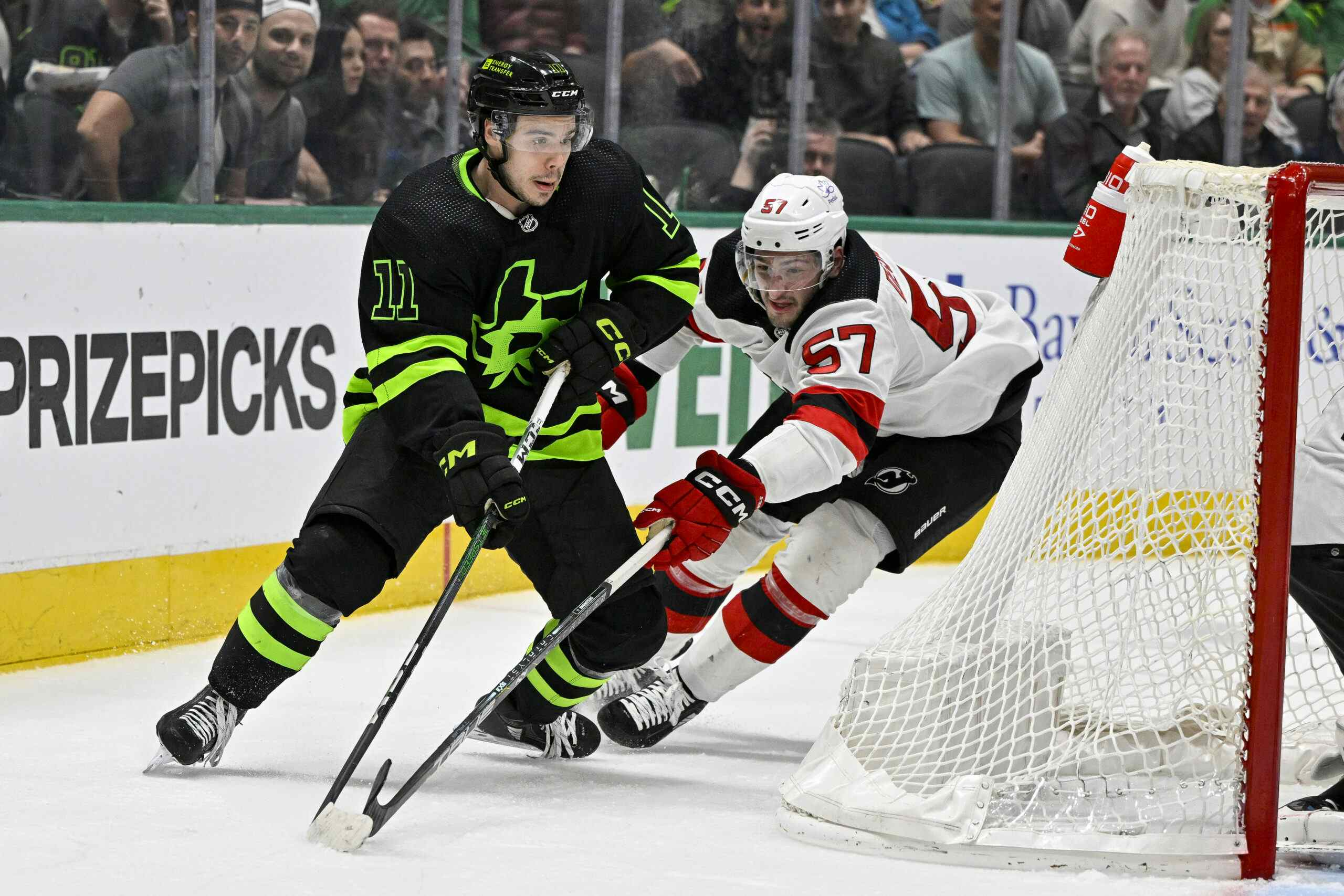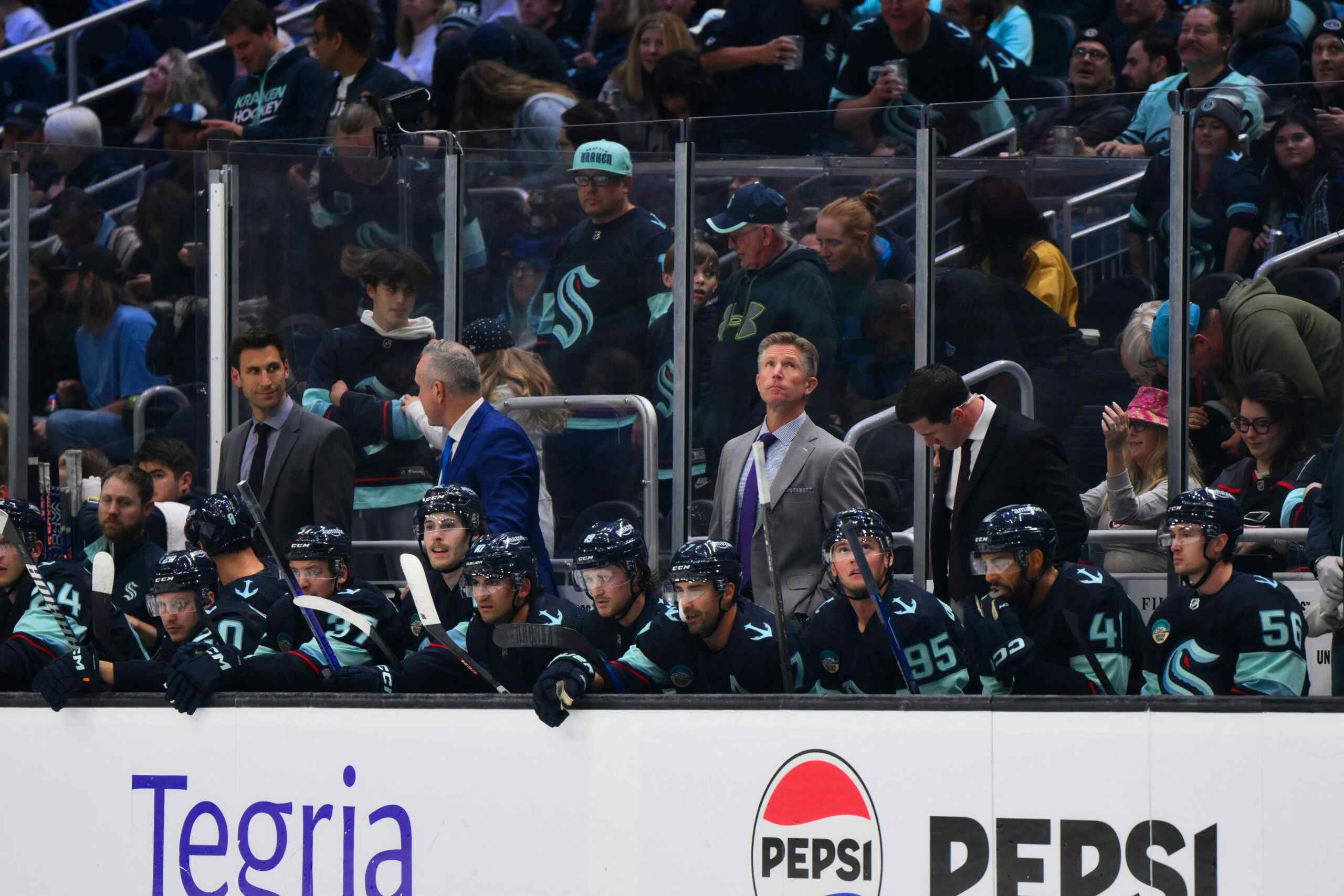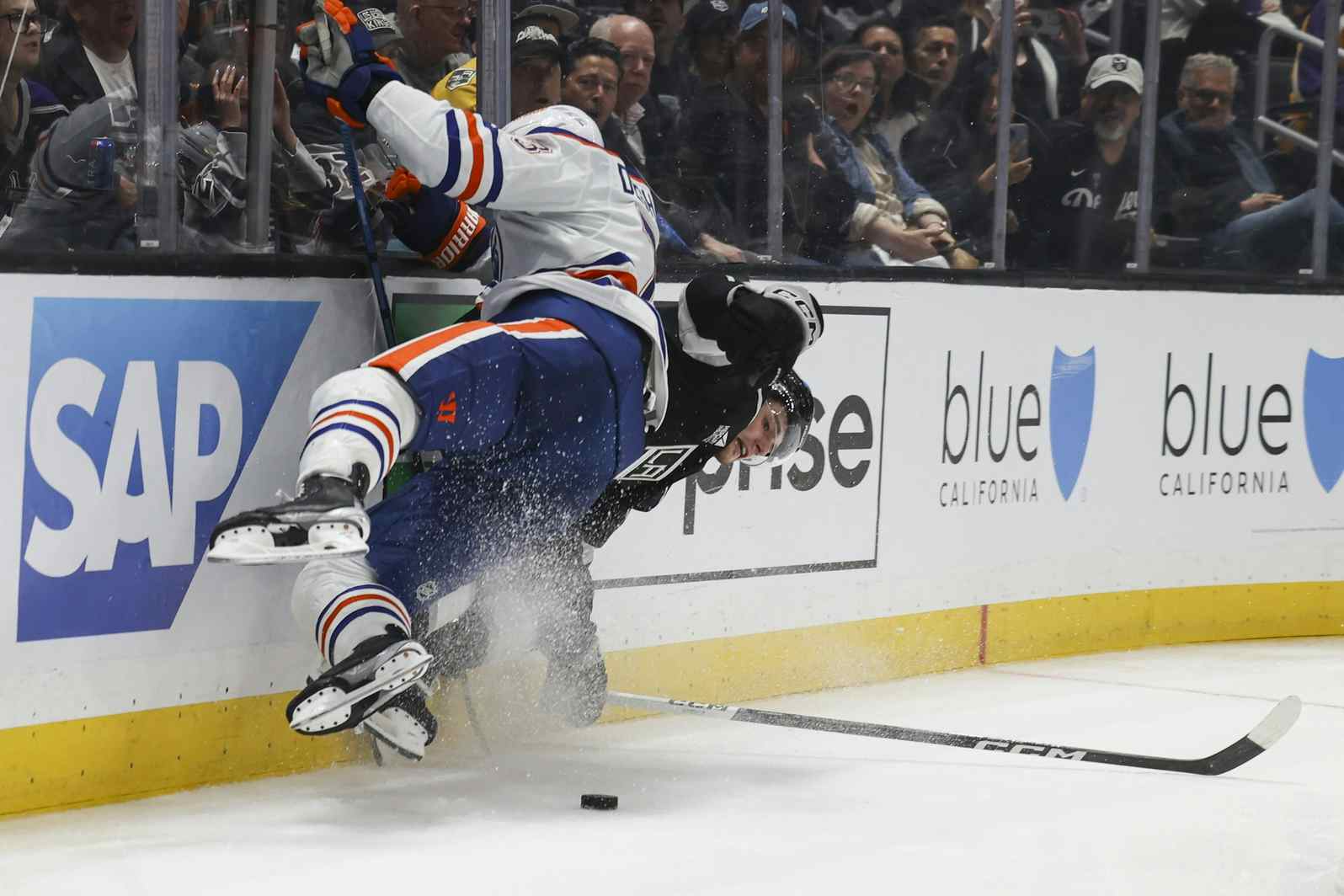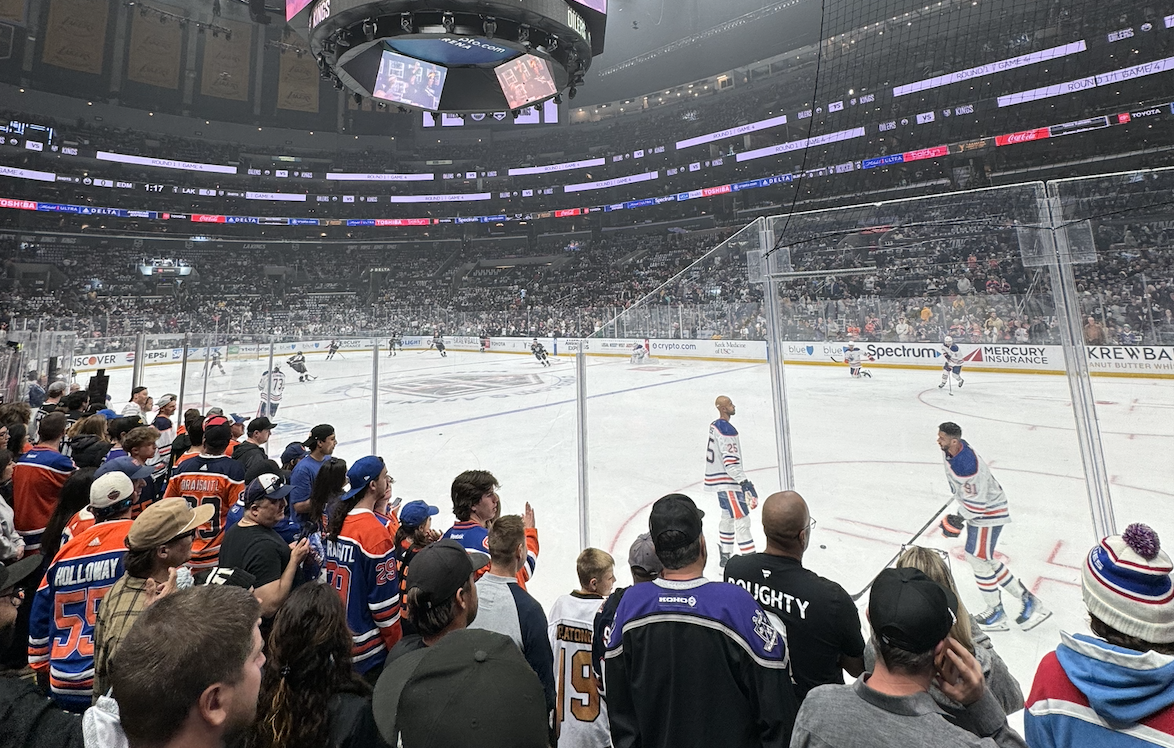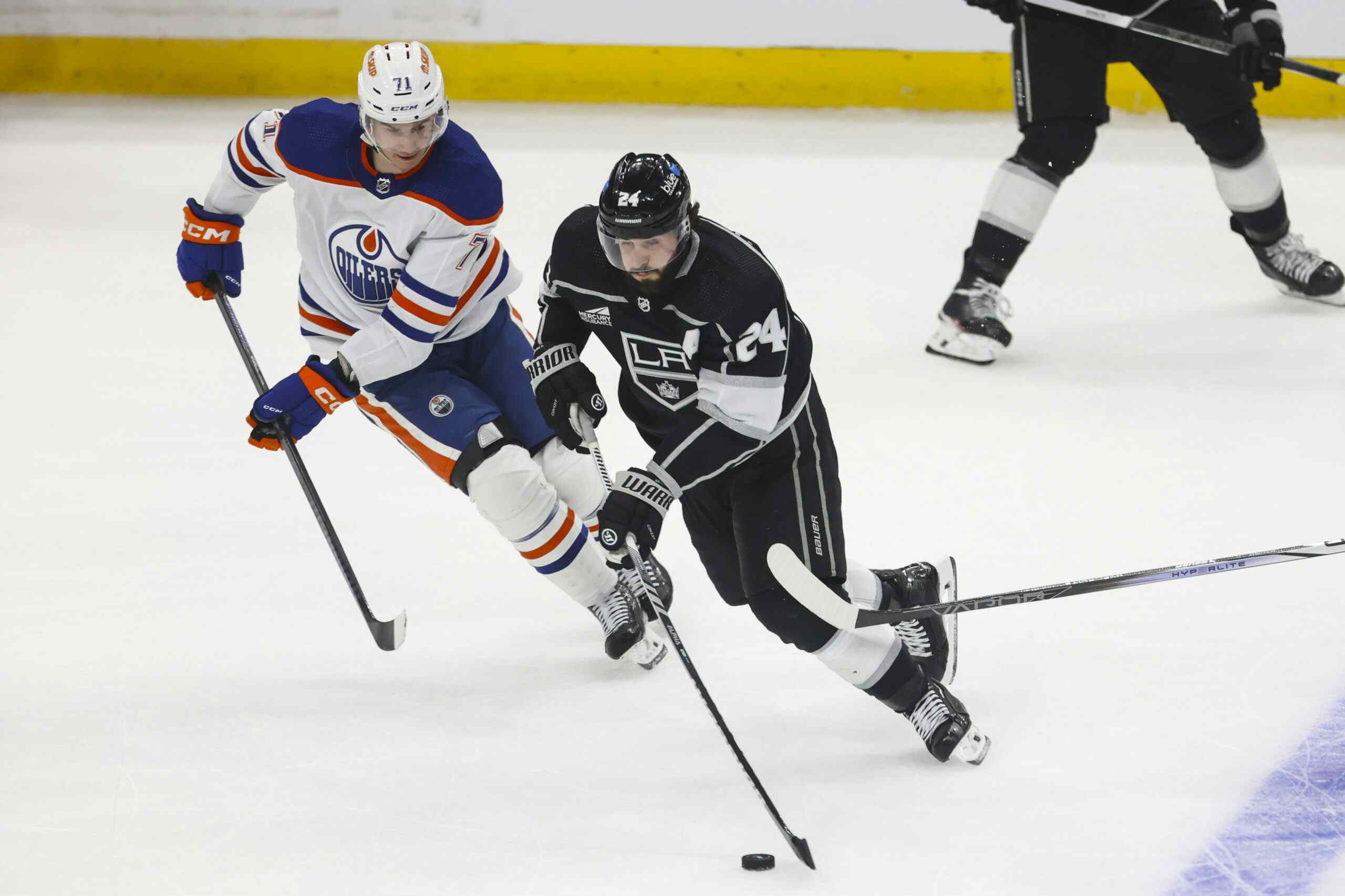Death by a Thousand Cuts

If there is a constant to the Edmonton Oilers failures post-Chris Pronger, it is the team’s unique ability to fritter away useful hockey players for nothing or close to nothing. One of those players, Kyle Brodziak, is currently plying his trade in the second round of the playoffs for the Minnesota Wild.
The Trade

At the 2009 NHL Draft, the Oilers shipped Brodziak off to Minnesota in a trade that made it clear exactly how much value they saw in the player.
Brodziak and a sixth round draft pick went to the Wild in exchange for fourth and fifth round draft picks. The Oilers picked defenceman Kyle Bigos with the fourth-rounder (he’s presently playing in the ECHL, never having been signed by Edmonton) and goaltender Olivier Roy with the fifth-rounder (sent along with Ladislav Smid to Calgary in the trade that brought back Roman Horak and Laurent Brossoit).
Oh, and just for good measure: the Wild drafted goalie Darcy Kuemper (12-8-4, 0.915 SV% this season) with the sixth-round selection they got back.
Jason Gregor, who was in attendance at the draft, wrote down Tambellini’s post-trade comments in a post on this site:
We do need to change our line up a bit. We have too many bodies at forward. We are willing to give some people a chance that haven’t had a chance before… [Gilbert Brule will] get a very good look this year, there is no question about it. But I’m not sure if that’s exactly what’s going to happen with that position.
What Actually Happened

Brule got a chance – and had a great season – mostly while playing on the wing. Marc Pouliot had some injuries and wasn’t all that impressive when healthy; never again would he be a full-time NHL’er. Mike Comrie was brought in and had a decent half-season, marred by injury. By default, minor-league journeyman Ryan Potulny ended up with the second line centre job; he’s played 10 NHL games since.
Brodziak had a terrible shooting percentage year but still ended up with 32 points; he followed that up with 37-point and 44-point campaigns. He struggled badly in 2013, but rebounded somewhat this year, largely used in a third-line role at even-strength by the Wild.
So far, the deal has cost the Oilers five years of roughly average (on balance) third line play from a guy who kills penalties, wins faceoffs and adds a bit of size (6’2”, 208 pounds) to the lineup. For a team that has struggled for ages in those departments, it’s a terrible move in retrospect. Edmonton finally filled the third-line centre role with Boyd Gordon, a smaller version of Brozdiak who lacks the same offensive touch, but he may well be bumped to the fourth line in the off-season.
Why Did They Do It?

Gregor’s immediate analysis of the Oilers motives is instructive:
Brodziak’s departure opens the door for Gilbert Brule to slide into his 4th line centre spot. The Oilers wanted Brodziak to be grittier and got tired of waiting it seems.
It seems to me that those two sentences sum up some key tendencies of Oilers management the last few seasons pretty well.
There’s always some new kid to rush into duty, and a desire to create space. The Oilers have done this forever, but they’ve been especially bad in the brutal post-Pronger years. Sam Gagner (who, like Brodziak, will probably be moved for peanuts and who, like Brodziak, is probably going to rebound somewhere else) is the poster boy for this, rushed into the NHL fresh out of the draft. Anton Lander, who replaced Brule as the Oilers’ fourth line centre, is another good example. Have things changed? I’ll answer that after I see which league Oscar Klefbom starts in next season.
Married to this in the case of Brodziak is that eternal desire for more grit. There’s a nasty tendency in Edmonton to turn on bigger players who don’t knock heads together, and the Oilers have done a bang-up job of shipping out big guys who play like that over the years. Size does matter in the NHL, but a lot of times bigger players can be effective (winning battles in the corners, blocking off the front of the net, going to the front of the opposition net, and so on) even if they don’t cut a bloody swath through the opposition. Detroit understands this; it’s baffling that the Oilers can’t seem to figure it out.
Today

The case of Brodziak is just one example of a larger trend that saw the Oilers ship out useful player after useful player which reached its zenith under Steve Tambellini. The end result has been a decimated and ineffective supporting core, both up front and on defence.
Take, for example, the Oilers’ bottom-nine forwards. I count one player (David Perron) who finished 2013-14 with the Oilers who outperformed in that role. The depth chart for next season includes him and – if Matt Hendricks and Boyd Gordon from the nucleus of the fourth line – two others who should provide above-average play in those slots.
It’s interesting that all three are Craig MacTavish additions, and useful to consider the purchase price. The Perron acquisition was a bargain, but cost significant assets (Magnus Paajarvi and a second) that the Oilers don’t have an abundance of. Gordon’s a fringe third-liner (i.e. a guy who can be effective if he’s supplied with excellent third line wingers) and he cost $3.0 million per season on a multi-year deal. Hendricks, ideally, doesn’t play above the fourth line at all, and his contract has three more seasons at just shy of $2.0 million.
Adding those three guys helped, but MacTavish has finite assets and finite cap space. To undo the damage caused by years of incompetent management, he needs to find his own Tambellini, someone who will trade him a useful and undervalued piece – like Kyle Brodziak – for pennies on the dollar.
It is as hard as it sounds.
RECENTLY BY JONATHAN WILLIS
Recent articles from Jonathan Willis

